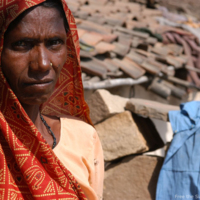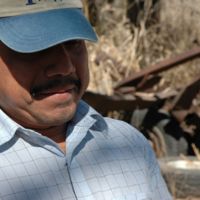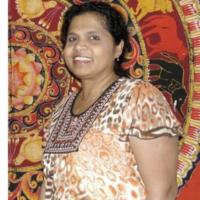
I came to Malaysia in 2007 because I had to help support my parents and my two younger siblings. We were poor and did not have enough money. An agent came to my village and spoke to my dad. The agent spoke to my father and told him that if I were to work in Malaysia, I would be paid 30 ringgit a day. The agent asked for 2 million taka, which we raised and paid. My father borrowed the money from friends, sold some of his cows and also sold a house that he owned. The agent told me that I would be sent to Malaysia within three months of the payment, but I had to wait eight months.
Once I reached KLIA airport, no one came to meet me, so I was taken to a holding area at the airport car park. There, I had to stand in sewage because there was a burst pipe. The urine was above my ankle level, and I was forced to stand in it together with about 55 others for three hours. We were in a holding area. There were many more being held in other areas. There were probably between 100 and 200 other newly arrived workers also there.
I called the agent, who told me to wait for the employer to come and collect me. After a night in holding, the employer came, and 55 of us were released to him after completing the biometric scans. We were then taken by bus to Shah Alam by a Bangladeshi agent named Ashraf. In Shah Alam, we were taken to a house where we were all kept in a room upstairs. I had my passport for about three days, after which the agent took it from me. We were kept in the house in Shah Alam for about six days. We were given some food, but the place was very small for all 55 of us. It was very hot, as there were no fans, and there was only one toilet. There was only a light. Although we were not locked in, we were afraid to leave the place because it was a strange new place and we had no documents. No one came to see us. The Bangladeshi agent told us that our employer would come there to see us and take us away.
When I asked Ashraf about the employer or where the employer was located, I was just told to wait. At about the eighth day of being in the house, the agent told us to leave and to go away and find work ourselves. I asked for my passport, but the agent said I would only get my passport if I paid 1,000 ringgit [$290] because my passport was with the immigration. I bargained with him and asked him for the amount to be reduced to 500 ringgit [$145]. I then borrowed money from my uncle and friends to get the money and paid the 500 ringgit in person to him. I got my passport.
My uncle then found me a job in the construction industry, next to the Damansara immigration office. I worked there for about two months but was not paid a single cent for my work. I worked about ten hours a day with no days off and also worked weekends. I did ask for my wages, but I was always told that I would be paid the following month. At the end of two months, the employer suddenly ran away. He disappeared from the site. I have gone back to the site many times to find him but did not see him there.
Narrative credit to Amnesty International
Originally published in ‘Trapped: The Exploitation of Migrant Workers in Malaysia’








